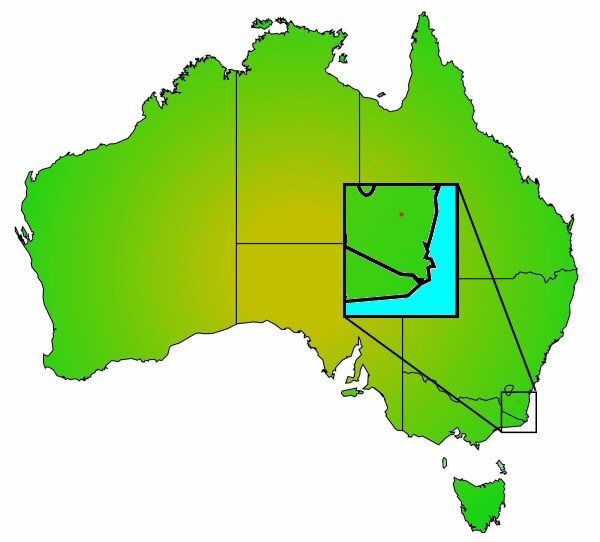Galaxias Brevissimus on:
[Wikipedia]
[Google]
[Amazon]
''Galaxias brevissimus'', the short-tail galaxias, is a
 This species has only been recorded from a creek in the very upper reaches of the coastal
This species has only been recorded from a creek in the very upper reaches of the coastal
galaxiid
The Galaxiidae are a family of mostly small freshwater fish in the Southern Hemisphere. The majority live in Southern Australia or New Zealand, but some are found in South Africa, southern South America, Lord Howe Island, New Caledonia, and the ...
of the genus
Genus (; : genera ) is a taxonomic rank above species and below family (taxonomy), family as used in the biological classification of extant taxon, living and fossil organisms as well as Virus classification#ICTV classification, viruses. In bino ...
''Galaxias
''Galaxias'' is a genus of small freshwater fish in the family Galaxiidae, and are frequently referred to as the galaxiids. These highly adaptable fish are typically found at temperate latitudes across the Southern Hemisphere.
Galaxiids are s ...
'', a member of the Mountain Galaxias species complex
In biology, a species complex is a group of closely related organisms that are so similar in appearance and other features that the boundaries between them are often unclear. The taxa in the complex may be able to hybridize readily with each oth ...
group of freshwater fish, found in Australia
Australia, officially the Commonwealth of Australia, is a country comprising mainland Australia, the mainland of the Australia (continent), Australian continent, the island of Tasmania and list of islands of Australia, numerous smaller isl ...
.
Description
''Galaxias brevissimus'' is a fish with a typicalGalaxiid
The Galaxiidae are a family of mostly small freshwater fish in the Southern Hemisphere. The majority live in Southern Australia or New Zealand, but some are found in South Africa, southern South America, Lord Howe Island, New Caledonia, and the ...
body form, with a long and tubular body, but distinguishable from other members of the family by a short caudal fin
Fins are moving appendages protruding from the body of fish that interact with water to generate thrust and help the fish swim. Apart from the tail or caudal fin, fish fins have no direct connection with the back bone and are supported only ...
(tail) and caudal peduncle
Fins are moving appendages protruding from the body of fish that interact with water to generate thrust and help the fish swim. Apart from the tail or caudal fin, fish fins have no direct connection with the back bone and are supported only ...
, hence the common name. Size is commonly to , maximum recorded is . The colouration is generally a mottled brown on the upper surface and sides above lateral line
The lateral line, also called the lateral line organ (LLO), is a system of sensory organs found in fish, used to detect movement, vibration, and pressure gradients in the surrounding water. The sensory ability is achieved via modified epithelia ...
, with this pattern continuing over the head and snout. The colouration is lighter below the lateral line becoming light brown or cream on the belly.
Distribution
 This species has only been recorded from a creek in the very upper reaches of the coastal
This species has only been recorded from a creek in the very upper reaches of the coastal Tuross River
The Tuross River, an open semi-mature wave dominated barrier estuary or perennial stream, is located in the South Coast region of New South Wales, Australia.
Course and features
Tuross River rises of the eastern slopes of the Kybeyan Range, ...
catchment in south eastern New South Wales
New South Wales (commonly abbreviated as NSW) is a States and territories of Australia, state on the Eastern states of Australia, east coast of :Australia. It borders Queensland to the north, Victoria (state), Victoria to the south, and South ...
. The location is at an elevation of AMSL
Height above mean sea level is a measure of a location's vertical distance (height, elevation or altitude) in reference to a vertical datum based on a historic mean sea level. In geodesy, it is formalized as orthometric height. The zero level v ...
about downstream from the source which is itself AMSL. The downstream distribution is unknown, but may have been more widespread in the past before the advent of introduced trout, which appear to have reduced and broken up its range.
Habitat
A wholly freshwater fish without a salt water phase in its lifecycle, ''G. brevissimus'' has only been found in one clear, open and gently flowing, small creek that was about across and around deep. The maximum recorded pool depth was . The creek consisted mostly of small pools connected by very short and shallow riffles with a creek bed of clay covered by sand, plus areas of silt. Cover within the creek was provided by rock,macrophytes
Aquatic plants, also referred to as hydrophytes, are vascular plants and non-vascular plants that have adapted to live in aquatic environments ( saltwater or freshwater). In lakes, rivers and wetlands, aquatic vegetations provide cover for aquat ...
and overhanging grass. Creek side vegetation had been cleared for grazing, being replaced by pasture and grass tussocks. The general area surrounding the creek where the fish were recorded was disturbed, as a result of clearing for grazing.
Lifecycle/Reproduction
Breeding biology is unknown, however all adults examined during mid March were at an early stage of gonad development. The smallest fish collected during this time, , indicates a possible breeding season of late winter or early spring. ''Galaxias brevvissimus'' is not believed to migrate to the sea or the estuary during its life cycle.Utility to humans
Not an angling target due to small size and conservation status.References
{{Taxonbar, from=Q85762523 brevissimus Fish described in 2014 Taxa named by Tarmo Ain Raadik Freshwater fish of Australia